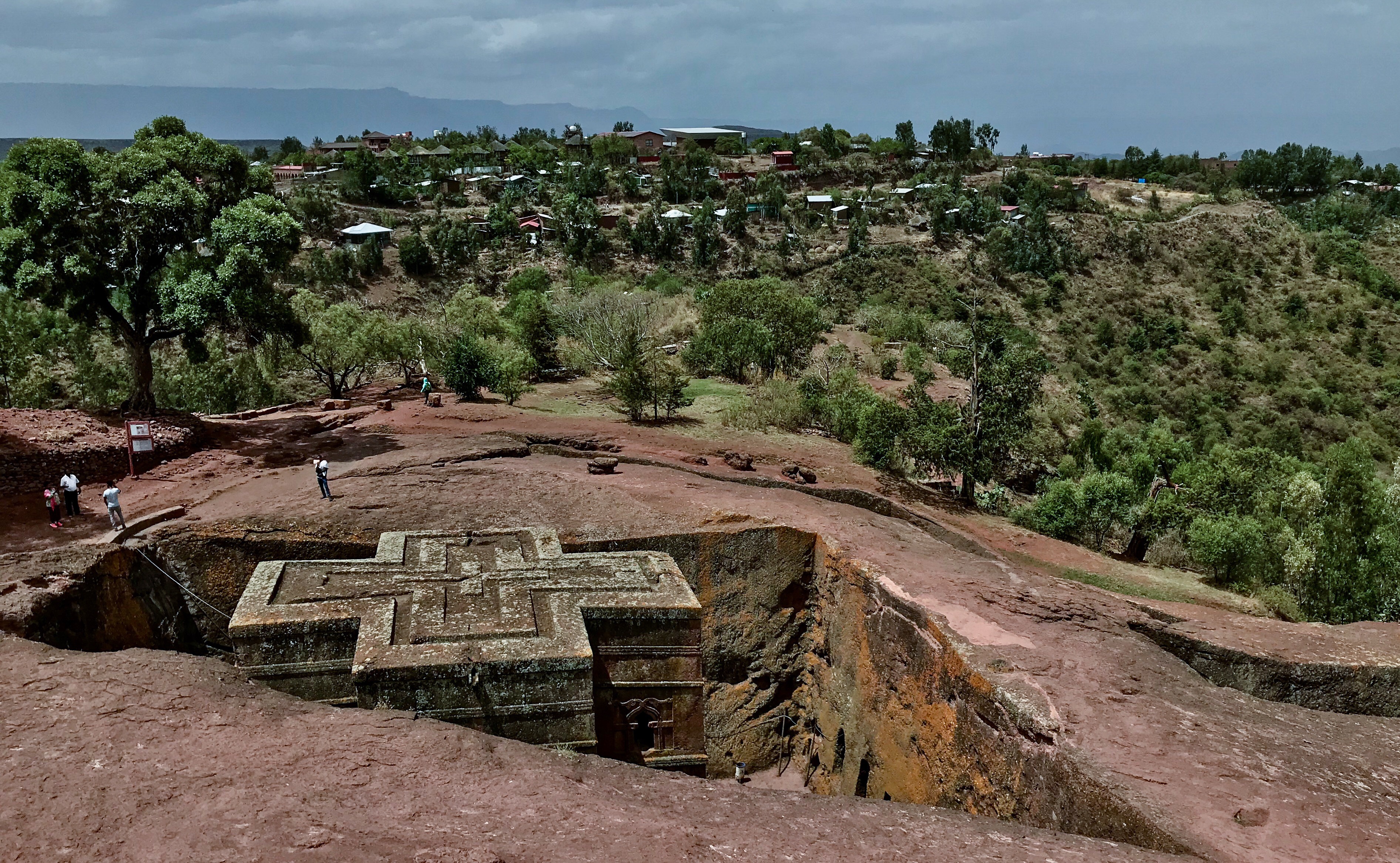Ethiopia: Lalibela
 We took an early morning flight from Gondar and checked into the Top Twelve Hotel, which is a boutique hotel with panoramic views over the Lalibela mountains. The ride up to the hotel is very steep but we arranged a transfer through them, which made it hassle free. When we arrived, Lalibela was experiencing one of their regular power cuts, which carried on late into the evening. We armed ourselves with head torches and headed over to Ben Abeba restaurant which is a must do, for at least one meal. It is a Dali-esque building that wouldn’t look out of place in a sci fi movie. It is part owned by a Scottish lady called Susan, who used to teach home economics in Glasgow until she moved over to Ethiopia to start this enterprise. She teaches young locals kitchen skills and hygiene and the restaurant serves both Ethiopian and Scottish dishes as well as a few fusion ones. Be sure to try the local take on a Shepherds pie, it is amazing; also, if whisky is your drink you should ask what Susan has in stock when you are there, if you’re lucky she may have a dram and a chat with you.
We took an early morning flight from Gondar and checked into the Top Twelve Hotel, which is a boutique hotel with panoramic views over the Lalibela mountains. The ride up to the hotel is very steep but we arranged a transfer through them, which made it hassle free. When we arrived, Lalibela was experiencing one of their regular power cuts, which carried on late into the evening. We armed ourselves with head torches and headed over to Ben Abeba restaurant which is a must do, for at least one meal. It is a Dali-esque building that wouldn’t look out of place in a sci fi movie. It is part owned by a Scottish lady called Susan, who used to teach home economics in Glasgow until she moved over to Ethiopia to start this enterprise. She teaches young locals kitchen skills and hygiene and the restaurant serves both Ethiopian and Scottish dishes as well as a few fusion ones. Be sure to try the local take on a Shepherds pie, it is amazing; also, if whisky is your drink you should ask what Susan has in stock when you are there, if you’re lucky she may have a dram and a chat with you.

We asked the hotel to recommend a guide and were introduced to Deacon Tadesse who looked after us during our stay. He is highly recommended and was friendly, knowledgeable and is a deacon at one of the beautiful churches in Lalibela. Please contact us for his details. We visited almost all the churches, which make this town famous; you have to see them to believe. They are like nothing we had ever seen before. The locals believe that angels helped to build them, as the technology and engineering required was far ahead of its time. You pass through narrow alleys and hidden tunnels in a rabbit warren of incredible architecture. We also visited a nearby cattle and grain market for a taste of local day to day life, this was quite full on but well worth it; good luck weaving your way through people, livestock, and produce!

In the afternoon we drove out of Lalibela to visit a cave church made of timber and stone called Yemrehanna Kristos. Although we were apprehensive as we had seen so many churches by this point, we are glad we made the effort as this was a unique building which was different to any of the others we had seen. There is also a rather confronting pit at the far end of the cave, with many human remains, some are partly mummified and you can still see flesh, hair etc. There are contrasting explanations for why these bodies are there – some say they are pilgrims who visited the church while others say that they died suddenly during a plague many years ago.

Lessons Learned and Anecdotes….
- If you use Ethiopian Airlines for your international flights into or out of Ethiopia, then you qualify for a big discount on any domestic fares. Make sure you check this out. There is a discount code which you can enter online when booking your flight. We received between 40% and 60% off our fares.

- If you can visit any of the churches during a festival, then you will get a completely different experience. We were there for the Saint Mary’s Day festival, which was the day we were due to depart. We were invited to revisit the churches very early in the morning to observe the locals attending the mass. It really brought to life all the explanations that we’d had to date regarding the traditions of the orthodox church. There were priests chanting, singing and dancing. Drums were being played and there were thousands of worshipers in and around the churches.
- Watch out for the children here. They have some pretty elaborate scams running to get money out of tourists. They are harmless but the stories that they tell you are not true. A common scam is to tell you that they have a school project, where their teacher has set a challenge to collect names, email addresses and donations from tourists. We heard many of the same stories from different children and our local guide told us to be wary.
- Wear shoes that are easy to remove as you will need to take them off each time that you go into a church or monastery.

